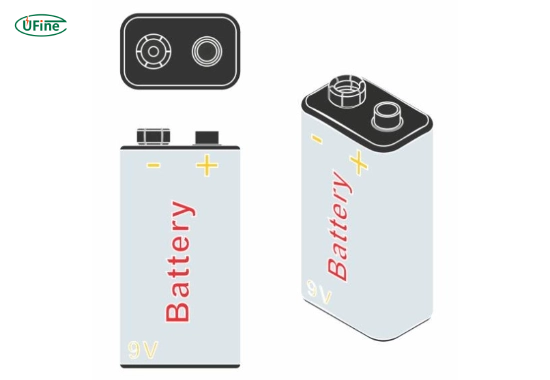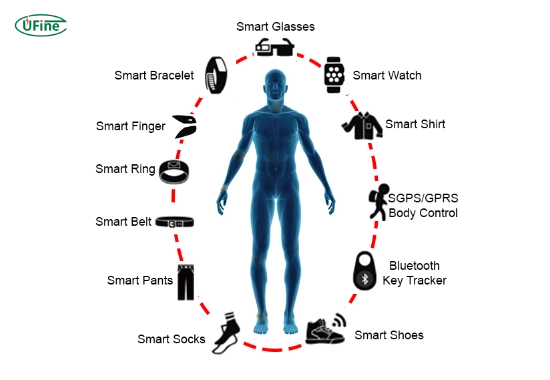Wearable technology is changing how we live. From smartwatches to fitness trackers and medical devices, these gadgets are everywhere. But they all have one thing in common: they need power. The 9-volt charging battery is emerging as a key player in powering wearable devices. Compact, efficient, and easy to recharge, these batteries are becoming vital to the wearable tech industry.
This article will explore why 9-volt batteries are ideal for wearables, the innovations shaping their future, and the challenges they face. Let’s dive in to learn more!
Part 1. What are 9-volt charging batteries?
A 9-volt battery is a small, rectangular-shaped power source that provides steady energy. These batteries have been around for decades, and people commonly use them on small devices like smoke alarms and radios. Now, manufacturers are adapting them for modern applications, including wearable technology.
What makes them special is that they are compact, lightweight, and rechargeable. This makes them perfect for wearables that need small, portable energy sources.
Part 2. Why are 9-volt batteries necessary for wearable devices?
Wearable devices are designed to be small and lightweight. They need batteries that don’t add too much weight or size. Here’s why 9-volt batteries are a great match:
- Compact design: These batteries are small enough to fit in the tiniest devices, such as fitness trackers or health monitors.
- Stable energy: Wearables need a constant flow of power to function correctly. 9-volt batteries provide that stability.
- Rechargeable options: Rechargeable 9-volt batteries save money and reduce waste, making them a sustainable wearable choice.
Part 3. How do 9-volt batteries improve wearable tech?
The use of 9-volt charging batteries in wearable technology brings several benefits. Here’s how they make a difference:
- Longer usage time: Modern 9-volt batteries can last longer than older versions. This means wearables stay powered for a full day or even longer.
- Fast charging: New technologies allow these batteries to charge quickly, so users don’t have to wait hours to power up their devices.
- Reliable power: A stable energy source is essential for devices like medical wearables. 9-volt batteries provide consistent power for accurate readings and performance.
Part 4. Innovations in 9-volt charging batteries for wearables
As wearable technology evolves, so do the batteries that power it. Several innovations are shaping the future of 9-volt batteries:
1. Solid-state batteries
Solid-state technology is replacing traditional liquid-based batteries. These batteries are safer, have higher energy density, and are more durable. This could mean smaller, more powerful 9-volt batteries in the future.
2. Flexible batteries
One major trend in wearables is flexibility. Researchers are developing flexible 9-volt batteries that can bend and twist without breaking. These will be perfect for wearable devices that conform to the body.
3. Wireless charging
Many wearables now support wireless charging. Future 9-volt batteries may come with built-in wireless charging capabilities. This will make charging more convenient and eliminate the need for cables.
4. Nanotechnology
Nanotechnology is improving battery performance. It helps create batteries that charge faster and last longer. For 9-volt batteries, this means more energy in a smaller package.
Part 5. Applications of 9-volt batteries in wearable technology
The versatility of 9-volt batteries makes them suitable for a wide range of wearable devices. Here are some key applications:
- Fitness trackers: These devices need steady power for step counting, heart rate monitoring, and calorie tracking. 9-volt batteries provide reliable energy for these features.
- Smartwatches: Smartwatches have advanced features like GPS, notifications, and health monitoring. They use 9-volt batteries to handle their energy needs.
- Medical wearables: Devices like glucose monitors and portable ECG machines rely on consistent power. 9-volt batteries ensure these life-saving devices work without interruptions.
- VR and AR headsets: Virtual and augmented reality wearables demand high energy. 9-volt batteries can support these devices while keeping them lightweight.
Part 6. Challenges of using 9-volt batteries in wearable tech
While 9-volt batteries are promising, they are not without challenges. Here are some issues that need to be addressed:
- Limited capacity: 9-volt batteries are smaller, which means they hold less energy than larger batteries. This can limit device usage time.
- Cost concerns: Advanced features like fast charging and solid-state technology can increase the cost of these batteries.
- Heat issues: Wearables often run continuously, which can cause batteries to heat up. Manufacturers need to focus on improving heat management for safety.
Part 7. Sustainability and 9-volt batteries in wearables
Sustainability is a growing concern in the tech world. Rechargeable 9-volt batteries are better for the environment because they reduce waste. Instead of throwing away single-use batteries, users can recharge them multiple times.
In addition, researchers are working on biodegradable battery components. This could make 9-volt batteries even more eco-friendly in the future.
Part 8. How to choose the right 9-volt battery for your wearable device?
When selecting a battery for your wearable device, choosing the right one is essential. Here are some tips:
- Check device requirements: Every device has specific power needs. Make sure the battery matches the voltage and capacity requirements.
- Opt for rechargeable batteries: Rechargeable batteries are more economical and environmentally friendly.
- Pick a trusted brand: Reliable brands offer better performance and safety features.
- Look for advanced features: Batteries with fast charging or longer lifespans are worth the investment.
Part 9. FAQs
-
Can 9-volt batteries power all wearable devices?
Not all wearables use 9-volt batteries. Depending on their energy needs, some devices may require different types of batteries. -
Are 9-volt rechargeable batteries better than disposable ones?
Yes, rechargeable batteries are more cost-effective and eco-friendly. They also last longer over time. -
How long do 9-volt batteries last in wearable devices?
The lifespan depends on the device and usage. On average, modern 9-volt batteries can last anywhere from a few hours to a full day. -
Are 9-volt batteries safe for wearables?
Yes, they are designed with safety in mind. Many have features to prevent overheating, overcharging, and short circuits. -
Can 9-volt batteries be recycled?
Yes, most 9-volt batteries can be recycled. Always check local recycling programs to dispose of them properly.
Related Tags:
More Articles

GoPro Battery Life Comparison: How Long Does a GoPro Battery Last?
Find out how GoPro battery life varies by model and get practical advice to maximize runtime for every adventure.
What Battery Powers Your GoPro?
Learn all about GoPro batteries - compatibility, runtime, charging tips, and how to extend battery life for longer shoots.
What Is a Disk Battery? A Simple Guide for Non-Tech Users
A disk battery is a small, round cell used in watches, remotes, and other electronic devices. It delivers steady power for compact, low-drain devices.
What Battery Powers a Space Heater?
Discover the type of battery that powers space heaters and learn how to choose the right one for efficient heating in your home or office.
What Is an LR14 Battery? Learn About This C-Size Cell
The LR14 battery, also known as a C battery, delivers steady power. Learn its specs, uses, lifespan, and how it compares to other battery types.





